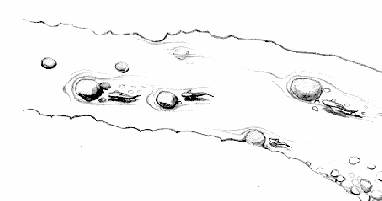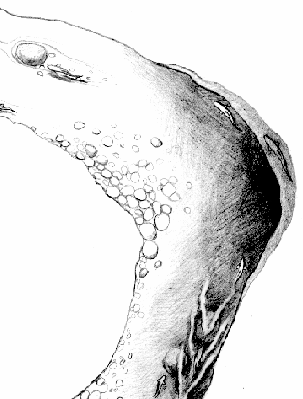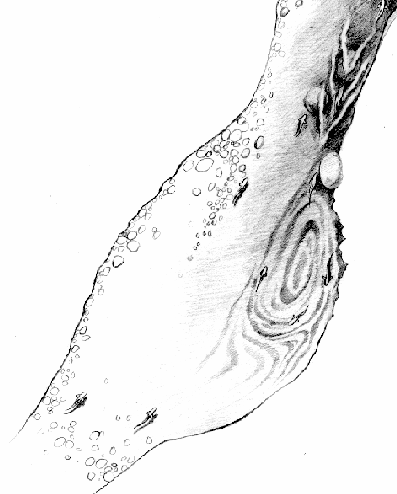
Learning to Fly Fish
Fly fishing can seem a bit overwhelming, but not to worry, there are a a lot of resources to help you get started. Below are some tips for fly fishing beginners. This isn’t everything you need to know, but if you want to learn to fly fish in the Rochester, NY area this should help you get started.
Learning to Cast
When people think of fly fishing, they think that casting will be difficult. Sending a line through the air can seem magical, but it’s really quite simple. Of course, as in all skills, you get better with time, but there a number of ways to get started. Like most subjects, the best way to learn is to find someone who already knows. Ask around and see if any of your friends are involved in the fly fishing. If so, you may have struck gold and found a fishing buddy for life. If you’re starting on your own, not to fear, there are other resources available.
One of the best resources is your local fly fishing shop. Shops like Orvis have “learn to fly fish” programs that are geared for beginners. These courses start basic and designed to help advance your skills. Best of all, these lessons are usually free. They even have a whole website, with lots of great videos, dedicated to learning to fly fish. Here’s their new Free Virtual Fly Fishing 101 Class- Register Here
The fly fisher’s workshop is another great place to learn how to cast. Held once every two years, you might have to wait a while to catch this event, but if you’re timing is right, then don’t miss the opportunity.
If you’re ready to dive in, many local guides offer learn to fly fish lessons that will provide you with individualized attention.
The Equipment
It’s probably worth noting that getting involved in any new hobby is going to require an investment. Remember, you don’t need to buy everything brand new. Keep an eye on Craig’s list or Facebook marketplace. There’s always the occasional person exiting the sport and looking to dump their equipment. Ebay can be helpful as well. Word to the wise, avoid buying online until you know what you’re doing. It’s always better to get in-person advice when you can, especially when you’re getting started. Your local fly fishing shop can be very helpful at setting you up with a beginner’s package.
Here’s a quick list of items you’ll need to get started:
Fly Rod and Reel (5wt rod for Spring / Summer or an 8wt rod for Fall / Winter)
Waders
Wading Boots
A variety of leaders and tippet
A variety of flies and fly storage containers
Like any hobby, there are endless things to buy, all at different levels of quality. My advice, ease in. Make sure you like the sport, and then you’ll naturally acquire more and more equipment, clothing and tools as you go.
Where to Fish
So you’ve got your gear, you’ve had a few lessons, now where do you go? Head on over to the fisheries section of this website. There you’ll find a list of the major fisheries and links to their DEC Public Fishing Rights maps. Those maps will provide you with an idea of where to fish, where to park, and what fish you can catch in that location.
Join Trout Unlimited! Come to the meetings and talk to your fellow anglers. You’ll be picking up different locations where people go to fish in no time.
Go to the local fly fishing store and “talk shop” with the staff and shoppers. Additionally, those beginner lessons I mentioned above, will take you to a few popular fishing spots.
Finally, it never hurts to invest in your new hobby by hiring a guide. A guide will not only help to show you the ropes, but by nature of their business, they’ll take you to a spot or two with the hopes of catching a fish.
Finding Fish on the River
The essence of fishing is finding fish. Fly fishing is no different in this respect. If you can’t find fish you won’t be able to catch them. One of the most crucial and overlooked aspects to finding fish is a stealthy approach to the stream. Most fisherman scare far more fish than they catch.
When approaching a good piece of water here are a few rules to follow:
Approach any good lies from down stream.
Be aware of your shadow. If you cast your shadow across a fish, it will flee to the nearest hiding place.
Keep a low profile and stay away from the water’s edge when surveying perspective water.
Don’t wade unless it is necessary.
If you do wade, fish the water closest to you first, even if the far bank looks the best.
Wade slowly!
Runs:
When fishing a run, look for features like boulders, logs, holes …etc. Any large submerged object that creates a break in the current is considered a feature. Fish will hold in the slack current that is created by such features so that they can ambush prey as it drifts by.
Bends:
Where a bend forms in a stream, usually the outside corner will form an undercut bank. An undercut bank is sure to be a lie for a big fish. Bends also cause the water to change velocity. Look for the changes in water speed between the inside and outside of a bend, where calm water meets fast water is where you’ll find the fish.
Pools, Riffles, and Eddies:
Riffles are created by under water obstructions, or changes in the stream bottom. These structures form good holding lies for trout while they are feeding. Riffles are also easier to fish because the broken water hides you from the trout.
Pools are deep large areas that hold many fish. While not feeding, the trout will move to the deeper hiding spots and rest. While actively feeding, the trout will move to the head and tail of the pools and feed in a single lane, sometimes called a feeding station. It is not unusual to see the same trout at the same place at the same time day after day.
Eddies form where obstructions break the water. The eddy in the illustration looks like a whirlpool that has cut the bank away over time. The fast current from the river pushes a lot of food into this type of eddy and trout know it. Look for trout facing downstream in eddies where the current is going in the opposite direction.
Stream Etiquette
As more people are learning to enjoy our fine trout streams in Western New York, it is necessary for all of us to use a little common sense and abide by the following guidelines when fishing:
Rule #1 In order to maintain good relations with the landowners and as a common courtesy please remember the following: most land adjacent to the water, unless it is state land, is privately owned whether it is posted or not. Crossing private land to reach a Public Fishing Area is neither legal nor ethical; especially when simply asking permission usually produces a favorable response. Please be aware that other fishermen would like to fish there too so don’t spoil it for the rest of us.
Rule #2 The first person in a pool or run has the fishing rights to it. If the stream is not crowded, give the whole pool to the other angler. If it is mobbed with people, make sure that you are at least a long cast (80-90 ft,) away from anyone else; more if the water is crystal clear.
Rule #3 While working the stream and you see another angler casting to rising fish or not moving at all, get out of the water and move well past him/her before entering again. This also applies when another person is fishing from the bank. In both situations stay far away from the edge so you don’t spook any of the fish.
Rule #4 Whoever is working UPSTREAM has the right-of-way. If you are going downstream, get out of the water. If you are going up, hope the other angler has read this.
Rule #5 If you meet another fisherman who is just sitting on the bank, ask from a distance if he/she is resting the pool or his/her body. Some people wait for a hatch at a particular place. If that’s the case, then get out of the water and go around him/her.
Rule #6 The most important rule is naturally the one that we always forget whether fishing or doing something else: “Do unto others as you would want them to do unto you”. When encountering someone else on the stream, put yourself in their waders and think.
Remember that the streams belong to all of us, and others have just as much right to be there as you.
The above rules of etiquette are simple. The more people that follow them, the more enjoyable the experience will be for everyone.
The Trout, Salmon, and Steelhead Fishing Guide to Western New York.
Published by Western New York Chapter of Trout Unlimited, 4th edition.




